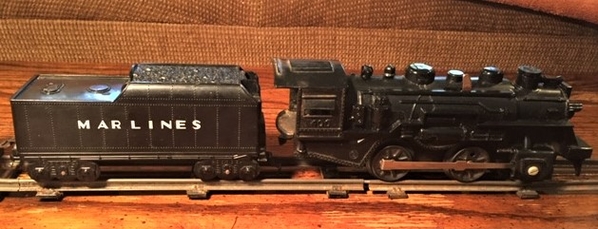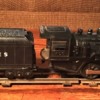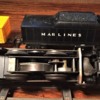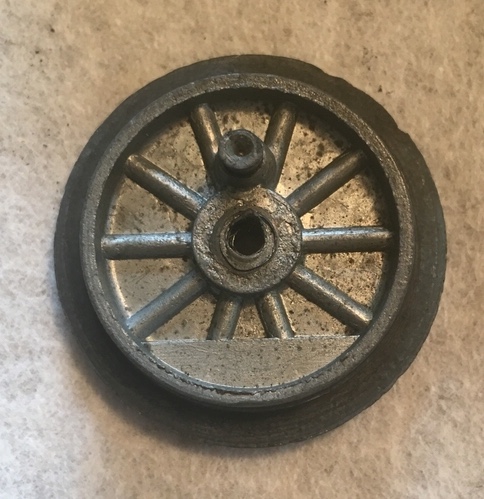Ok Marx Fans...here is something I encountered but have really not been able to fully ID...MARX MYSTERY STATION!
I obtained this Marx (verified by Marx logo on station) "Wheaton" station and when I picked it up I thought that it might be HO but upon careful measurement it is clearly "0" gauge as at 1/4" to the foot the lithographed doors would be a normal 6+ft high x 3 1/2 ft wide clearly in scale for O and way out of scale for HO. The station, in regards to model number or other ID has no markings what so ever except the Marx circular logo. On the bottom it has in crayon an old price of $ 2.75 but no year. By comparison the Marx # 2889 Battery Whistling station which has a very similar building but no roof hat was in the 1958 catalog priced at $4.00 and as I will show below the two buildings are almost the same size. Any further information you have or if you have other examples please post...Thank you!
Here is the front of the station. All openings are just lithographed, nothing really opens. The view through the window appears like an old B&W photo of real people. The Spanish Tile peaked roof is a "hat" as I will show later. The entire structure is completely sealed with no access to the insides at all without releasing the structural metal tabs. The station clearly has either a horn or whistle inside but I have not been able to confirm which. I will try to power it up at some point to satisfy my curiosity.
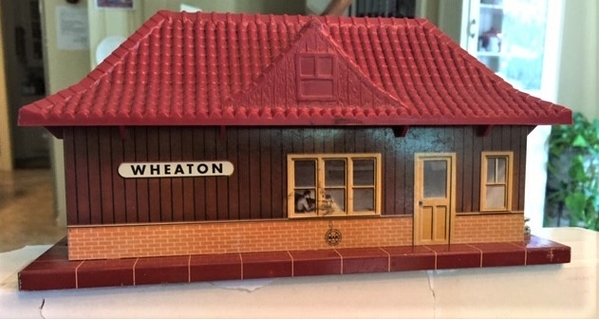
Here is the "track side" or rear of the station. Single door is labeled "office" and the double freight doors are labeled "baggage"

Here is the station with the roof "hat" removed. The roof hat is a single plastic molding in one color with embossed detail on the outside only. It is a simple slip on fit and is not retained except by friction. What I found most interesting is the the building w/o the roof is almost the same size as the #2889 series whistling stations w/o canopy. Could the same die with different printing have been used - a common Marx method to save money. Who knows?
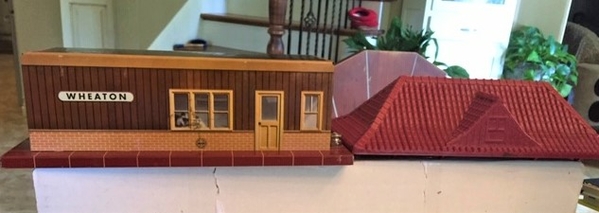
Here is the power input side. The two wires from these terminals just disappear into punched holes in the base. The base also has 3 insulated mounting pins set in a triangular pattern that takes up the full width and length of the base. There also are three punched "air holes" which might lead to the conclusion of an air whistle but again, the interior cannot be accessed without serious disassembly.

Here is the non power input side, slightly different lithography and the door is labeled "Telephone"
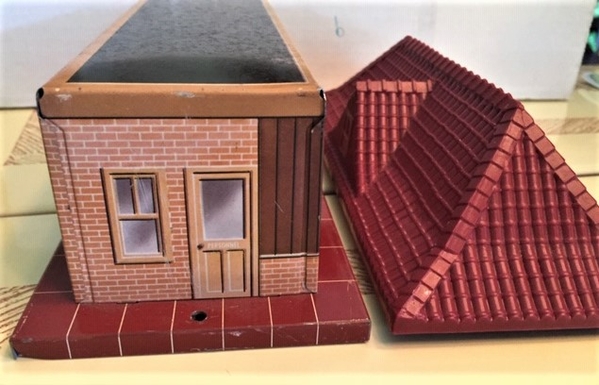
Here is the roofless building with a ruler to show scale

The Base is 8 1/4L" X 3 1/2" W X 1/4" H
The Bldg w/o the base is 7" L X 2 1/2"W X 2 1/4" H
This makes the total height 2 1/2 " including the height of the base. Interestingly this is nearly the same advertised height as the #2889 Battery Whistling Station (2 5/8 " H). The length compared to the #2889 is close 8 1/4" vs 9" although this station is much more narrow, 3 1/2 " vs 5 1/2" so it would fit in a more narrow space on the layout.
If we put on the roof "hat" (the #2889 had no such addition) the total height of the roof peak would be 4" or 16ft in O scale.
So Marx Train friends, there you have it. A mystery station, no number, no pictures in any of my catalogs and no mention in any of my reference books. Clearly 0 scale and Marx for trains...so what do you make of this??? Any help is most appreciated.
Don
































